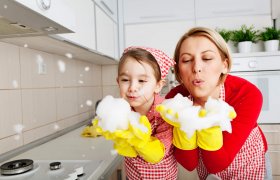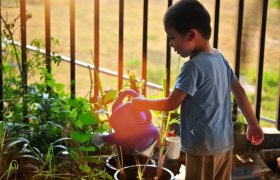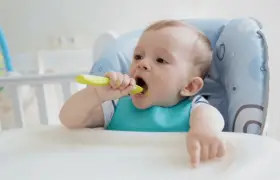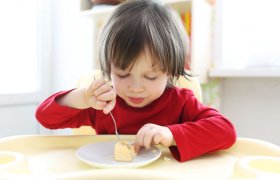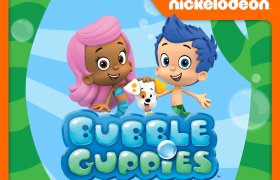Fun Methods to Teach Children Proper Hand Washing
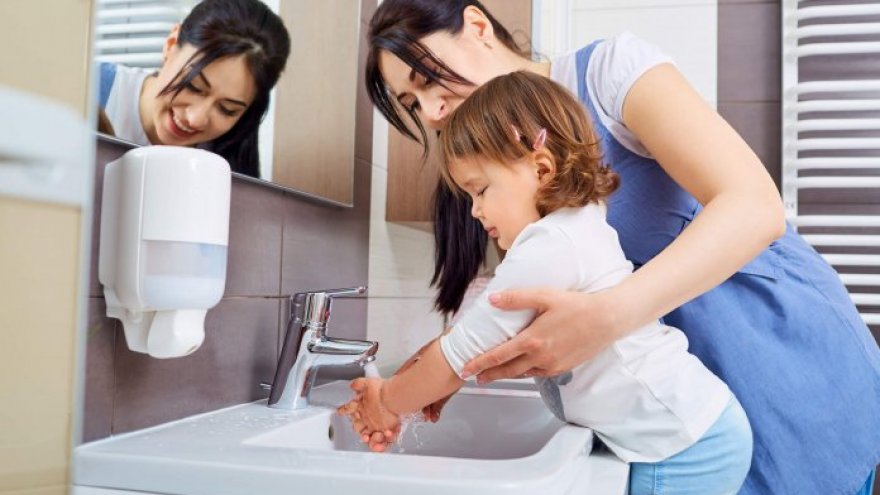
Germs and bacteria can spread like wildfire. Especially when there are children involved. Parents constantly find themselves saying “wash your hands” all day long to their children. The earlier that you teach them to do it, the less germs that will travel through your household causing colds and other ailments!
It’s always a good idea to have some hand sanitizer or even baby wipes around for those times when you just can’t get to running water and soap. Inevitably, your child will end up with a cold, caught most likely from touching someone that has a cold and then not washing their hands immediately afterward.
While germs may still make their way around, teaching kids the best way to avoid spreading them and as early as possible can stop them from having more colds and illnesses than they would without proper hand washing techniques. These 10 goofy and fun ways will help parents teach their children how, when, and why hand washing is a top priority.
Make the washroom kid friendly
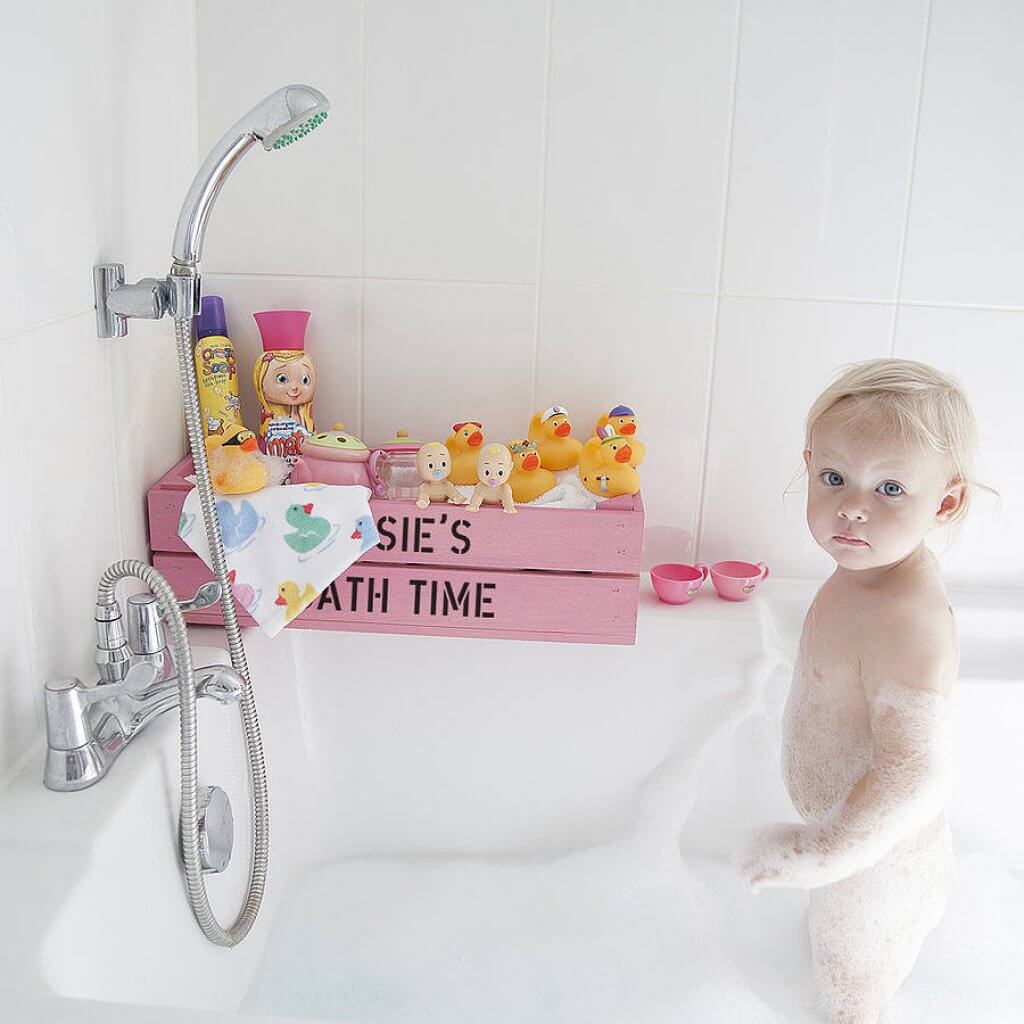 One way to help kids learn to wash their hands often is by making the washroom/bathroom kid friendly. Start by getting a kid-sized stool, something they can stand on to reach the sink. If need be, stores also sell faucet extenders for little ones that are a little smaller.
One way to help kids learn to wash their hands often is by making the washroom/bathroom kid friendly. Start by getting a kid-sized stool, something they can stand on to reach the sink. If need be, stores also sell faucet extenders for little ones that are a little smaller.
After you add the stool, add a bunch of kid friendly things such as towels with their favorite characters or colors, then some really fun soaps, and be sure they can reach everything. Keeping all the items within their reach will make them feel proud of themselves because they were able to do it themselves without an adult’s help.
Buy kid-friendly soaps
Even if you have already made the washroom more user-friendly for the little ones, adding in some cool soaps can make it that much better. Soaps come in varieties of colors, sizes, shapes, foam, non-foam, they even have soap that lights up! What kid wouldn’t love that? There are soaps that change color when hands are clean, some that play music, and let’s not forget the types that are like a disco light show when it’s dark in the bathroom. Do not forget the soaps that are in their favorite character dispensers like SpongeBob, The Avengers, and so on.
Create a hand washing chart
Most houses have a chore calendar or chart on the fridge or wall, this is the same concept. Create a hand washing chart so that your little one can understand all the different things that occur throughout the day and how they need to wash their hands after each of them.
Use columns with different labels such as sneezing, coughing, touching dirt, touching garbage, petting animals, before dinner, before breakfast, before lunch, before bedtime, and any other reasons you can come up with. Once they get themselves into a routine, it will be easier to get them to wash their hands. As an incentive, try adding a star to their chart when they follow it properly, when they do not, just minus a star from the chart.
Glitter it up
Many teachers, daycare providers, and others use this method. It’s simple and helps to teach children about the importance of hand washing and how germs spread. Get some glitter, different colors, and a few kids together since this works best with multiple children around. Have all of them put the hands in a specific color of glitter, no one has the same color.
Once that is done, allow them to shake hands with each other. Afterward, show them how quickly germs can spread by showing how the different color glitters show up on their hands after they shake hand with other kids. Then of course, have them wash the glitter off their hands.
Teach them a song
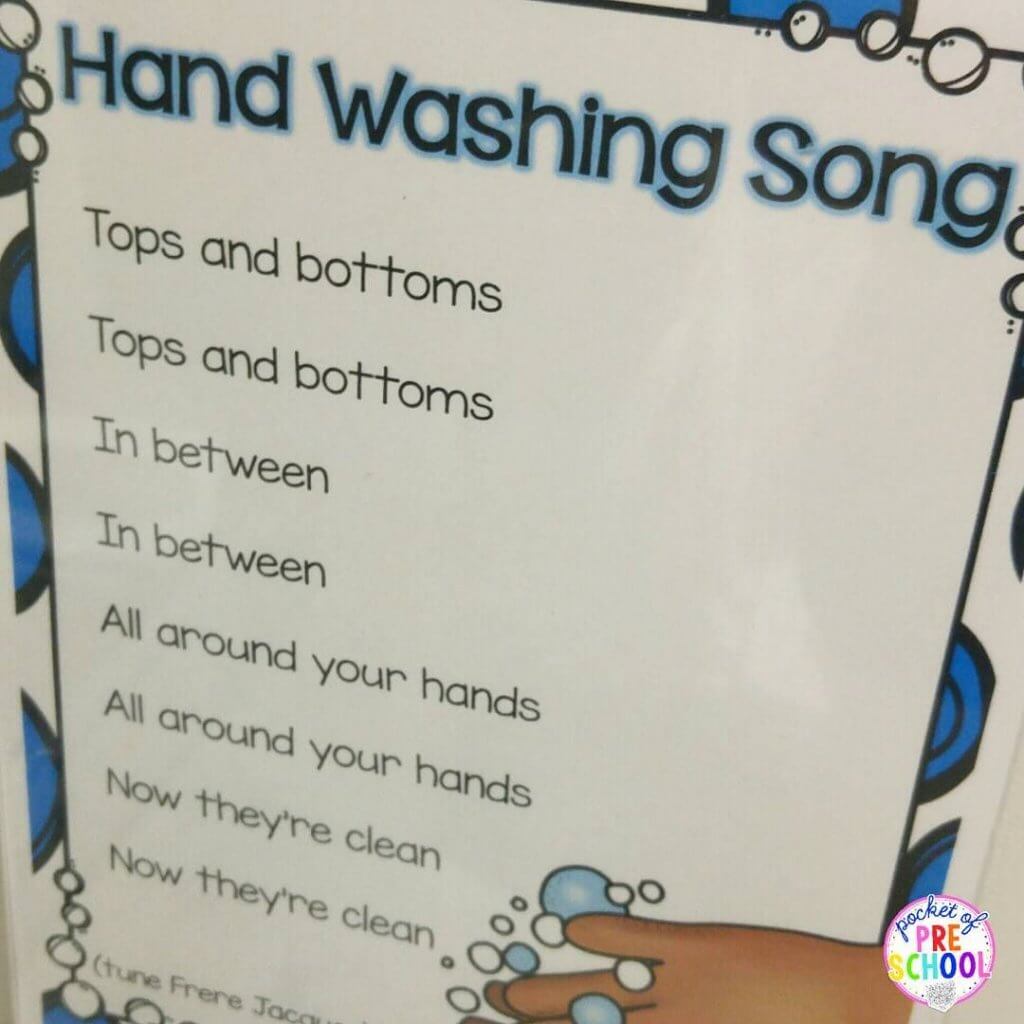 The Center for Disease Control recommends washing hands for at least 20 seconds in warm water. This can seem like a lifetime to a child, consider yourself a lucky parent if they leave the water running more than five seconds. Since this can seem like a long time to children, have them sing a song that lasts at least 20 seconds while they wash their hands. It can be a made-up song or Happy Birthday or even Twinkle, Twinkle Little Star. Just be sure whatever song they sing lasts at least the recommended amount of time.
The Center for Disease Control recommends washing hands for at least 20 seconds in warm water. This can seem like a lifetime to a child, consider yourself a lucky parent if they leave the water running more than five seconds. Since this can seem like a long time to children, have them sing a song that lasts at least 20 seconds while they wash their hands. It can be a made-up song or Happy Birthday or even Twinkle, Twinkle Little Star. Just be sure whatever song they sing lasts at least the recommended amount of time.
Wash your hands often
While this may not be goofy or fun, your child will watch you wash your hands and want to do the same thing as Mom or Dad. Set an example for them, after all, you are their main role model and they learn from watching and then doing the same thing. You should consider following the same chart you created for them to help them understand that washing hands is just as important for adults as for kids.
Hot potato soap
This method obviously is for more than one person. If you don’t have a group of children around, make it a family thing if you need to. The ingredients are easy, soap, running water, music and a child to play this game. Same rules as the hot potato game except with soap. Whoever is holding the soap when the music ends needs to wash their hands. Fun and simple, something kids can relate to.
Give them reading materials
There are plenty of excellent children’s books on the market that teach kids about germs and bacteria. There are also many online resources that are inexpensive or free tools for teaching the proper hand washing techniques and how germs or bacterias can be dangerous and what could happen if they are spread to another person. Do your research, and you’ll find some valuable information to show to your children.
Grow your own germs
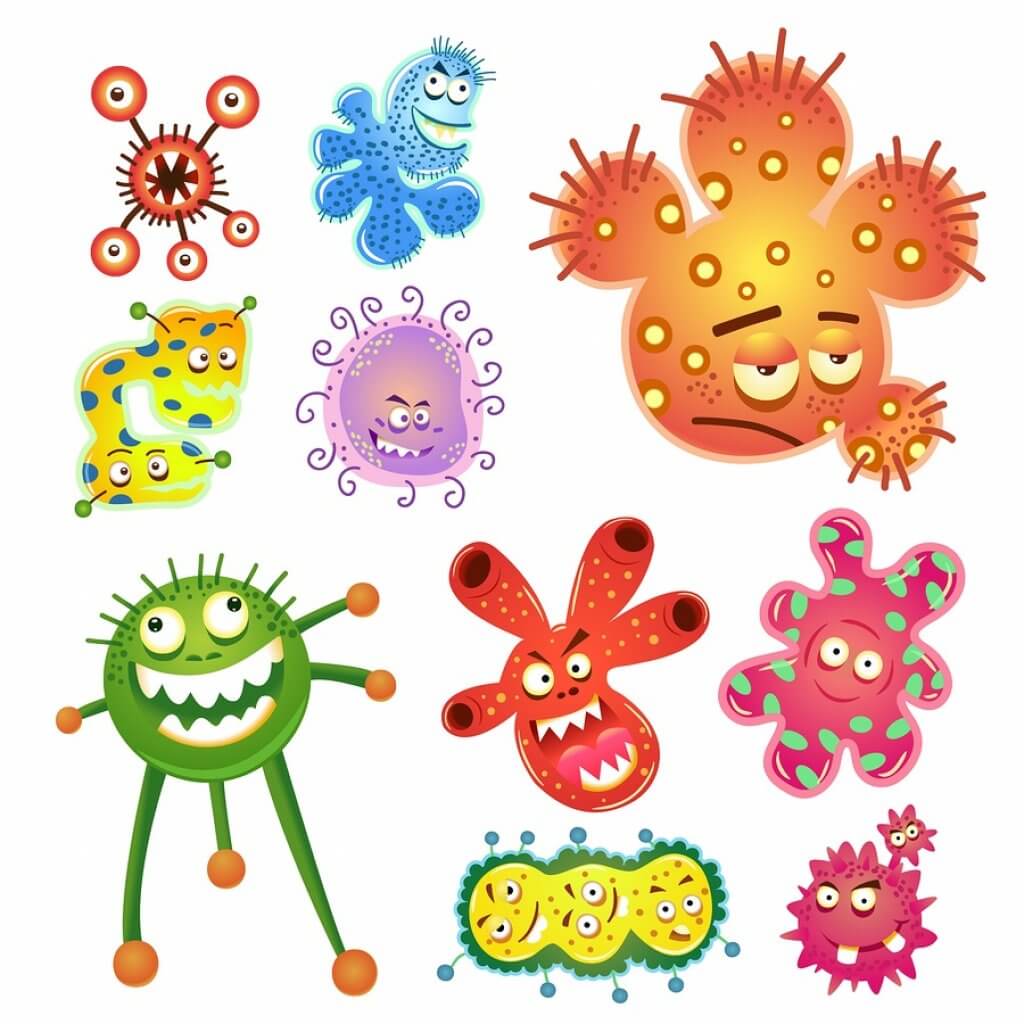 Wait, what? Yes, grow your own germs, consider it a family science experiment. Science can be fun! There are a few tutorials online that show how germs can affect food items, but the apple one is by far the best one I’ve seen so far. You’ll need an apple, four jars, tape, a sharpie marker for labeling, and a child that wants to participate. To see the entire tutorial check out it online, it is pretty awesome! Growing your own germs can certainly be an eyeopener for the little one that doesn’t want to wash their hands properly.
Wait, what? Yes, grow your own germs, consider it a family science experiment. Science can be fun! There are a few tutorials online that show how germs can affect food items, but the apple one is by far the best one I’ve seen so far. You’ll need an apple, four jars, tape, a sharpie marker for labeling, and a child that wants to participate. To see the entire tutorial check out it online, it is pretty awesome! Growing your own germs can certainly be an eyeopener for the little one that doesn’t want to wash their hands properly.
Reinforcement and repetition
It is a fact that younger children learn best with repetition and reinforcement. Story books and posters are great ideas to help with teaching younger children how to wash their hands correctly. It is also a good idea to print out some coloring pages that can be found online about germs and bacteria, but make it an activity that you both engage in. They can color while you explain about what the germs are doing on the pages, and how to stop them from spreading, etc. Included in this tip you can also make up skits where you get sick or a germ tries to make you sick but you fight it, just be creative and make it fun for the little one.
These 10 techniques will get you started in teaching proper hand washing or they could inspire you to create your own fun and goofy ways of teaching your children. With a little creativity, you could be the Queen or King of clean hands and warrior against those little germs that love to invade your kingdom!

